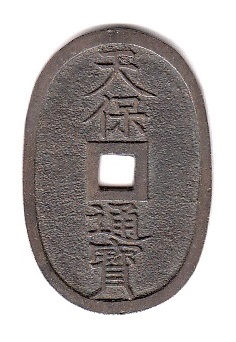投稿者:浩泉丸
In the past, the skin of Sendai Sen in Tenpoutuuhou was described as "skin that looks like it was pecked by pine needles," but in reality, "Nanakoji" is more accurate. When you think of "skin that looks like it's poked with pine needles," you get the image of "there are a lot of small craters on the skin," but in reality, it's closer to the image of "a collection of small fish eggs." increase.
In the past, the cast skin of Tenpoutuuhou Sendai Sen was often described as "skin that looks like it was pecked by pine needles." When you think of "skin that looks like it's pecked with pine needles," you get the image of "there are many small craters on the skin."
However, I think that the expression "Nanakoji" is more natural for the cast surface of Tenpoutuuhou Sendai Sen. In other words, I think that the cast skin of Tenpoutuuhou's Sendai sen is closer to the image of "a lot of small fish eggs gathering".
I think that the cause of the unevenness of the casting surface is the casting sand used at the time of casting, but the casting surface of Tenpoutuuhou Sendai Sen is particularly beautiful, and it looks as if it was made intentionally.
昔、天保通寶仙台銭の鋳肌は「松葉でつつかれたような肌」とよく言われていました。 「松葉でつつかれたような肌」と言えば、「肌に小さなクレーターがたくさんある」というイメージが浮かびます。
ただ、私は天保通寶仙台銭の鋳肌は「魚子地肌」という表現の方が自然だと思います。つまり、天保通寶仙台銭の鋳肌は「小さな魚の卵がたくさん集まっている」というイメージの方が私は近いと感じます。
鋳造面の凹凸の原因は、鋳造時に使用した鋳物砂だと思いますが、天保通寶仙台銭の鋳肌はとりわけ美しく、まるで意図的に作られたようにも見えるのです。
(Google翻訳)

